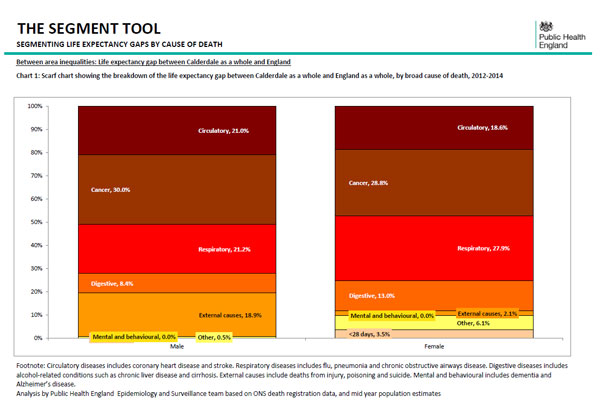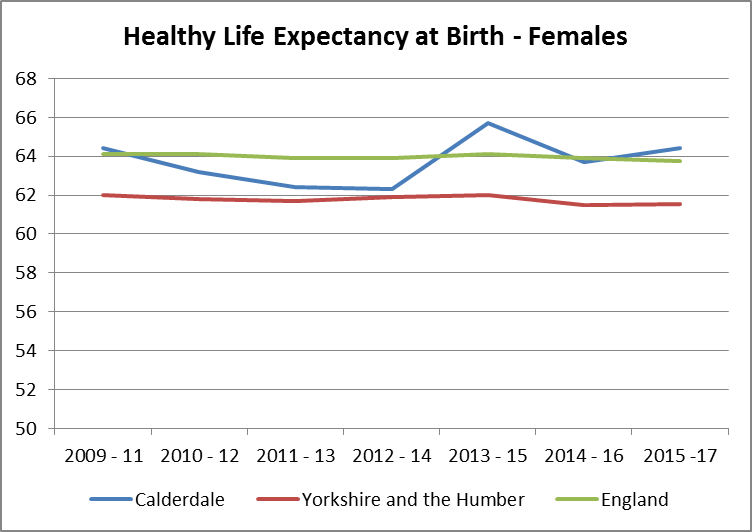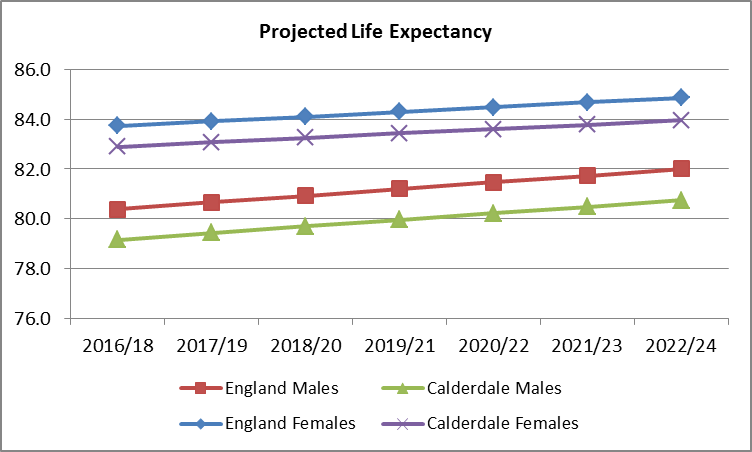Life expectancy at birth is a summary measure that:
- Estimates how many years a baby born in the time period is expected to live;
- if current death rates apply throughout their lifetime.
Healthy life expectancy is the number of years a person can expect to live in "full health".
The local picture
Since 1992/94 life expectancy in males in Calderdale has increased by almost 6 years. Males are now expected to live to 78.6 (2015-2017 data), though this is still a year less than the England average. Life expectancy in females has increased by 4 years since 1992/94. Females are now expected to live to 82.1 (2015-2017) though this is a year less than the England average.
The chart below shows that for both males and females cancer is the biggest contributor to the life expectancy gap between Calderdale and England for which there are 26 excess deaths per year in males and 16 in females. This is followed by respiratory conditions (21 excess deaths in males and 24 in females) and circulatory conditions (23 excess deaths in males and 9 in females).

More detailed information can be found here: Profiles for Calderdale.
Healthy life expectancy at birth - males

Healthy life expectancy at birth in males increased between 2010/12 and 2014/16 to be in line with the England average. The most recent year’s data has shown a drop of almost two years, though the change is not statistically significant.
Healthy life expectancy at birth - females

Healthy life expectancy at birth in females decreased from 2009/11 to 2012/14. However it has increased since 2013/15 and is now 64.4 which is slightly higher than the England average at 63.8 years.
Inequalities
There are significant inequalities in life expectancy in Calderdale, with males in the least deprived quintile expected to live 7 and a half years longer than those in the most deprived quintile. Females in the least deprived quintile are expected to live just over 9 years longer than in the most deprived quintile.
Current provision
See individual chapters for details of service provision for the major causes of death.
User views
No user views have been recorded.
Unmet needs
See individual chapters for details of unmet need for the major causes of death.
Projected future need
If current trends remain, life expectancy in both males and females is expected to increase by 2022-24 to 80.7 and 84.0 respectively, an increase of around two years. However both males and females in Calderdale are still expected to live one year less than the England average.
Projected life expectancy

Key considerations linked to the known evidence base (what works?)
Mortality from these conditions needs to be reduced:
These are detailed in other chapters.